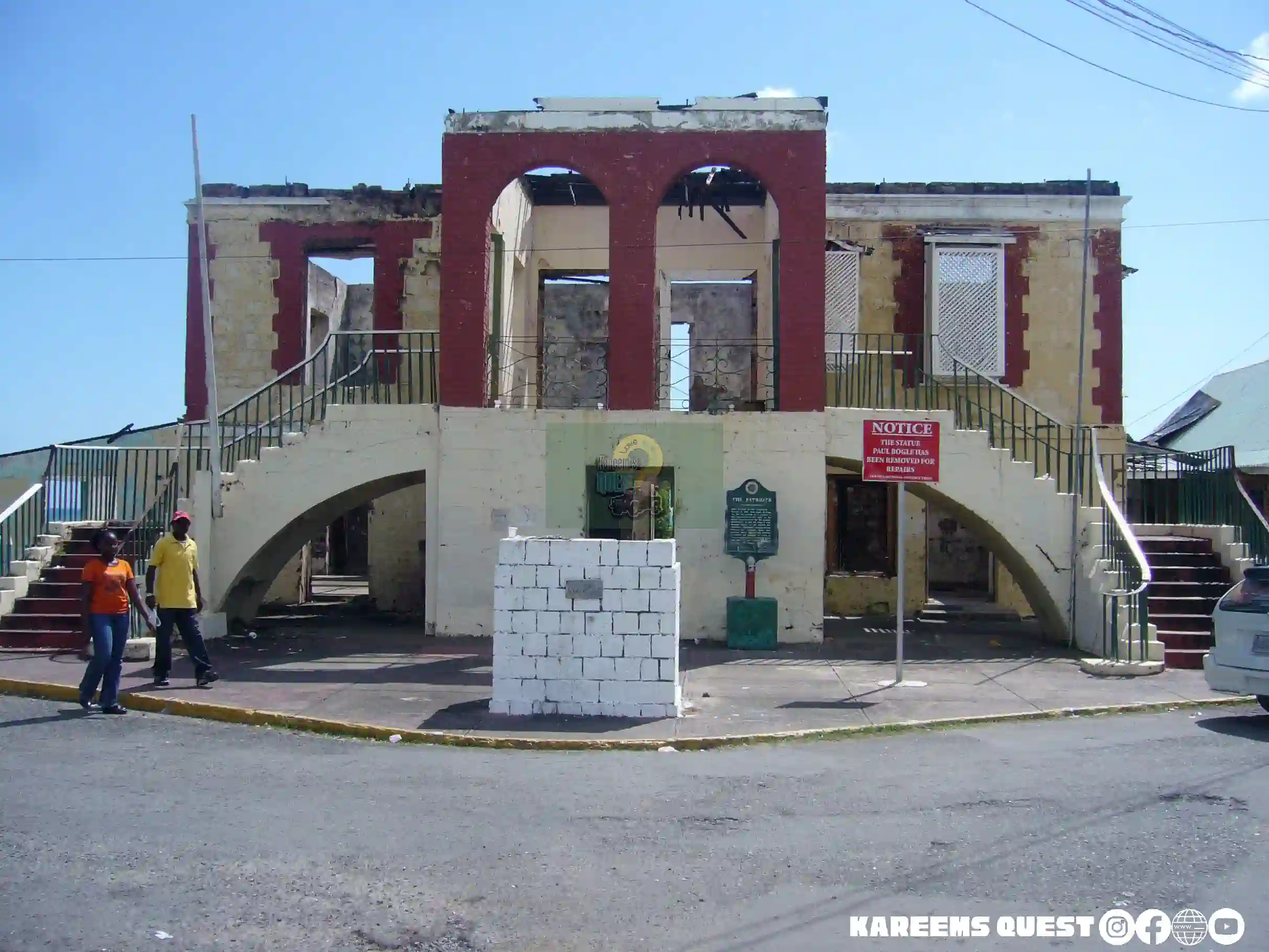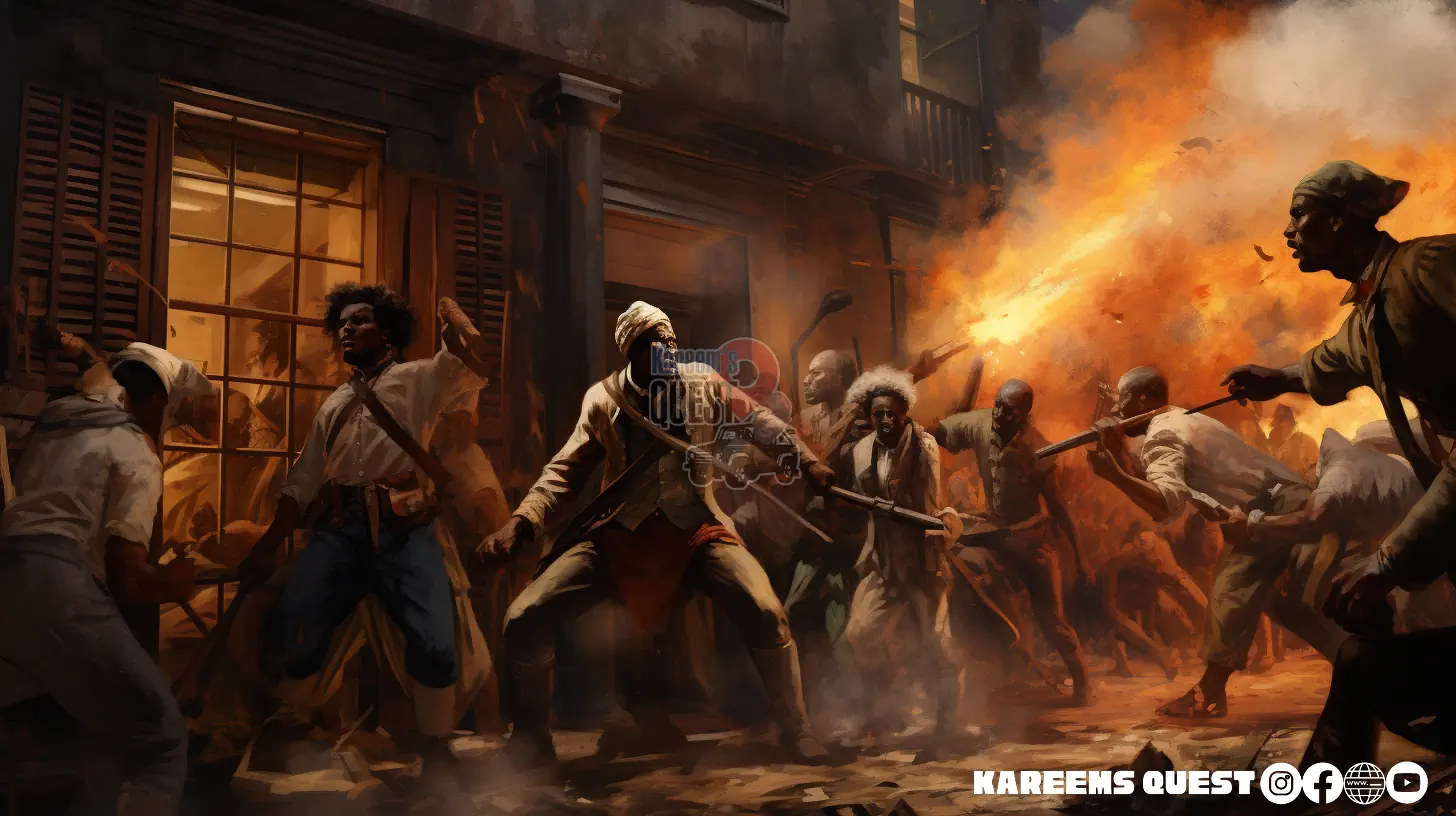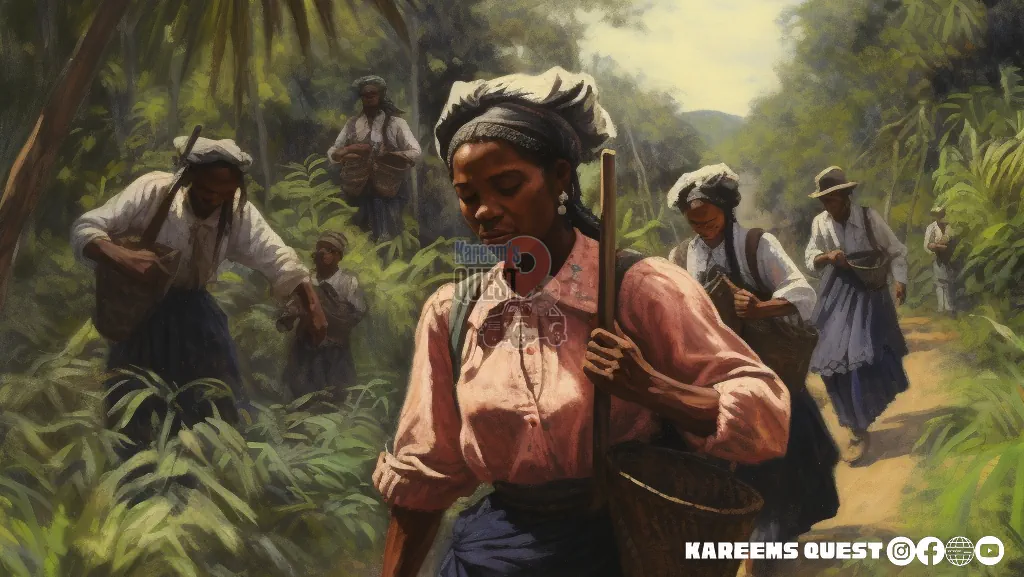
Kareemsquest.com recently drove past the Morant Bay courthouse which has the imposing statue of Paul Bogle in front of it. However, it was hard to look at the deplorable state that the site was in, especially against the backdrop of the relevance of our freedom. When kareemsquest.com spoke with a resident, he affirmed, “Dat courthouse always have a mysterious fire, because of all the wickedness dat happen to the people.”
The same spot we were at, was the site of a bloody protest in early October 1865. In the courthouse, were several white aristocrats including judges and planters who barricaded themselves inside.

Waiting outside, was an angry black mob, consisting of labourers and lower-class citizens, who were on the hunt for justice, by any means.

Jake Cavanaugh, in his essay “The Cause of the Morant Bay Rebellion: 1865,” stated that a white flag was hoisted by those who were inside, as they realised they were grossly outnumbered. However the years of injustice and oppression had taken a toll on the former slaves and in the end many of the aristocrats were killed including eighteen justices, magistrates, and volunteer guards.
Why the Courthouse

The Morant Bay Courthouse was a symbol of British authority in Jamaica, and its destruction was a major blow to the colonial government.
Video of the Week – Ole Time Jamaica
The origin of the aforementioned event started on 7 October 1865, when a black man was put on trial in the Morant Bay courthouse, and charged with trespassing on a long-abandoned sugar plantation. This proved to be the last strike of oppression, as the poor black Jamaicans of the parish were angered by this additional example of systematic inequality, and marched on the courthouse under the leadership of Bogle. Many of the protestors came for Stony Gut, a community KareemsQuest.com is very familiar with.
Here is a quick side note that kareemsquest.com thought was relevant. During the same year the United States passed the 13th Amendment, abolishing slavery.
Bloody repercussion

After this bold act, by the black citizens, they were met with repercussions by the island authorities that were deemed inhumane by even top ranking members of the monarch. This included killing over 400 black individuals, including women and children, and burning over 1000 homes. Troops also arrested more than 300 persons, including Bogle who led the rebellion, along with his friend George William Gordon, a wealthy black landowner.
What caused the grievance of the people

Back then, the island’s population was a little over 400,000 people and only an estimated 60,000 blacks were employed, while as many as 130,000 capable adults went jobless. In addition, fewer than 2,000 were eligible to vote, and those were almost exclusively white, due in part to a large voting fee that blacks had to pay, in order to participate. [1] As one observer stated, “they possess no effectual voice in the making of laws which touch their interests.”
The civil uprising was ultimately caused by a number of factors, including economic hardship, political disenfranchisement, and racial discrimination. For us at kareemsquest.com, it’s ironic how some of these cries are still being echoed today. Furthermore, most freedmen, who were farmers, saw their living conditions worsened following crop damage by floods, cholera and smallpox epidemics, and a long drought.
Nothing to be Happy about

The Jamaican economy was in a state of decline in the years leading up to the rebellion. The sugar industry, which had been the backbone of the Jamaican economy, was in a state of collapse. This was due to a number of factors, including competition from other sugar-producing countries, the abolition of slavery, and the high cost of labour.
Something had to change
The political situation in Jamaica was also unstable in the years leading up to the rebellion. The Jamaican Assembly, which governed the island and was dominated by white planters, was opposed to any reforms that would benefit black Jamaicans. This led to a growing sense of disenfranchisement among black Jamaicans.
Racial discrimination was also a major factor in the rebellion. Kareemsquest.com researched that black Jamaicans were often denied access to education, jobs, and other opportunities and this led to a growing sense of resentment.
The existence of all of these challenges created a powder keg in Jamaica and things got even worse, when the leaders of the rebellion Paul Bogle and George Williams Gordon were arrested and charged for treason. They were popular leaders among black Jamaicans, and their arrest led to protests and riots, which quickly turned violent, and the British authorities were forced to send in troops to suppress the rebellion.

While the British authorities quelled the uprising, the greater damage against oppression was already done, as the word of the revolt had spread to other Caribbean islands.
Its impact shook up the existing governance of the land with the abolition of Jamaica’s self governance system, as the island reverted to a direct-ruled crowned colony of England.
The Morant Bay Rebellion was a major turning point in Jamaican history. It showed the British authorities that black Jamaicans were not content with their lot, and it led to a number of reforms in the years to come. However, the rebellion also left a legacy of bitterness and resentment that continues to this day.
Here are some major slavery uprisings in the Caribbean:
- The St. John’s Slave Rebellion (1733): This was one of the earliest and longest lasting slave rebellions in the Americas. It took place on the Danish island of St. John, and it lasted for over a year. The rebellion was eventually suppressed by the Danish authorities, but it left a lasting legacy of resistance to slavery in the Caribbean.
- The Haitian revolution – The Haitian Revolution was a major slave revolt that took place in the French colony of Saint-Domingue from 1791 to 1804. The revolution was led by Toussaint Louverture, Jean-Jacques Dessalines, and Henry Christophe, and it resulted in the establishment of Haiti as the first independent black republic in the Americas.
- The Bussa Rebellion (1816): This was the largest slave rebellion in the British Caribbean. It took place on the island of Barbados, and it was led by a slave named Bussa. The rebellion was eventually suppressed by the British authorities, but it led to a number of reforms in the treatment of slaves in Barbados.
- The Demerara Revolt (1823): This was a major slave rebellion in the British colony of Demerara (now Guyana). It was led by a slave named Quamina, and it involved over 2,000 slaves. The rebellion was eventually suppressed by the British authorities, but it led to a number of reforms in the treatment of slaves in Demerara.
- The Sam Sharpe Rebellion (1831): This was the largest slave rebellion in the British Caribbean. It took place on the island of Jamaica, and it was led by a Baptist preacher named Samuel Sharpe. The rebellion was eventually suppressed by the British authorities, but it led to the abolition of slavery in the British Empire in 1834.
Sources:
Jake Cavanaugh, “The Cause of the Morant Bay Rebellion: 1865,” University of Miami Digital Collections (University of Miami) Accessed 2 Dec. 2015. https://scholar.library.miami.edu/emancipation/jamaica4.htm
https://en.wikipedia.org/wiki/Morant_Bay_rebellion
https://ianrandlepublishers.com/product/pieces-of-the-past-a-stroll-down-jamaicas-memory-lane/
Do you want more Kareem’s Quest content?
To get the latest Kareem’s Quest STORIES, click this link, then click the star button.
